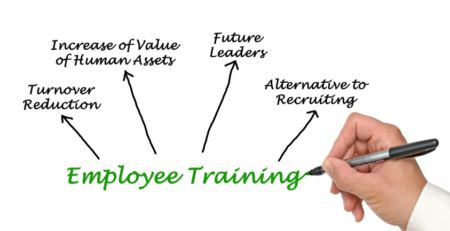Intelligent Process Automation… Friend or Foe?
Your LinkedIn feed is probably full of intelligent process automation success stories, and your mailbox full of people wanting to talk to you about how they can replace your workforce with robots and automate every process and sub-process. “It’s quick to deploy, it’s low risk, business users can set it all up, IT will love it…” they say.
The Reality….
It’s easy to get caught up in the buzz, but there are some pretty sobering stats out there around failed IT and automation projects that merit pausing for thought. A report from the Project Management Institute states that 14% of IT projects fail. Of those that didn’t fail, 31% missed their objectives, 43% went over budget and nearly half were late.
An Ernst and Young report describes an RPA (Robotic Process Automation) failure rate of between 30-50% and in 2018, Gartner made a prediction that 85% of AI projects would fail. So why would anyone consider some form of automation project?
The Pitch…
Successful deployment of intelligent automation technology leads to organisations being able to process and manage a much wider range of data-driven and electronic tasks – at a greater pace, with more accuracy and far more consistently. There are some staggering potential gains for organisations and it’s easy to get caught up in the hype!
The availability of new technologies that are accessible and affordable has changed the way in which organisations can address Digital Transformation. Now, more than ever, process automation and digital ways of working are not the sole domain of the largest corporations, but a necessity for all organisations wanting to compete in today’s economy.
Intelligent Automation technologies that allow organisations to digitise, optimise and accelerate business processes have been enhanced with the addition of machine learning and artificial intelligence that push the boundaries of the digital solutions that can be built. By combining these into a common framework platform, it starts to become possible to build smarter and more complete solutions to drive digital transformation strategic initiatives.
Worth Considering…
- Get the Balance Right – getting hung-up on trying to automate everything is usually a recipe for disaster. Any automated improvement on a manual process is a gain, and its better to make small, measured iterative steps that add up to bigger gains and don’t break everything.
- Be Brave with the Process – it’s about transformation. So, when you think about the process, think outside the box, about what it could be, rather than just trying to automate what is already there.
- Differentiate with a Human Touch – we’ve all been on the end of a process which has been automated to a point that has left us disappointed, disenfranchised or confused. Nobody likes this. Building in ‘actual’ people into a process is not a bad thing and often adds value to a customer or someone consuming your services.
- Get the Plan Right – it’s a project like any other. The requirements need to be properly understood, project sponsors need to be fully signed up and committed, don’t change the objectives half way through, set the budget and timeframes only once the requirements and objectives are understood, understand the risks, build in the contingency, get the right resource and empower them to make decisions.
- Be Cognisant of the Technology Capability – clearly there is no point in setting objectives that can’t be met by the technology, so make sure you understand the technology well enough, or find someone who does.
- Know Your Audience – make sure you have accurately assessed and understood the consumers of your digital processes. Not everyone can or wants to download an app or engage digitally. Make it easy for someone to move from a physical to a digital channel. Owen Kilbane at Kofax does an excellent job of explaining what can be done to migrate customers to digital channels and showing how easy it can be in this short video below “Engaging with your Customers Electronically through Paper-based communications“.
- Quality of the Tools – sure you don’t want to pick up any old automation tool, but just because an analyst makes an arbitrary assessment doesn’t mean it’s the right tool for your organisation. It’s not what it is, but what you do with it that’s important, and it needs to be a good fit for the processes you want to automate.
- Work with Experts – at Telic Digital, our people have 100s of successful intelligent process automation projects behind us. Our reputation is based on successful automation project delivery, so we will give you real advice, in plain language and the benefit of our experience.
For further assistance on understanding the potential for Intelligent Process Automation in your organisation, please contact our experienced team who will be happy to assist.












